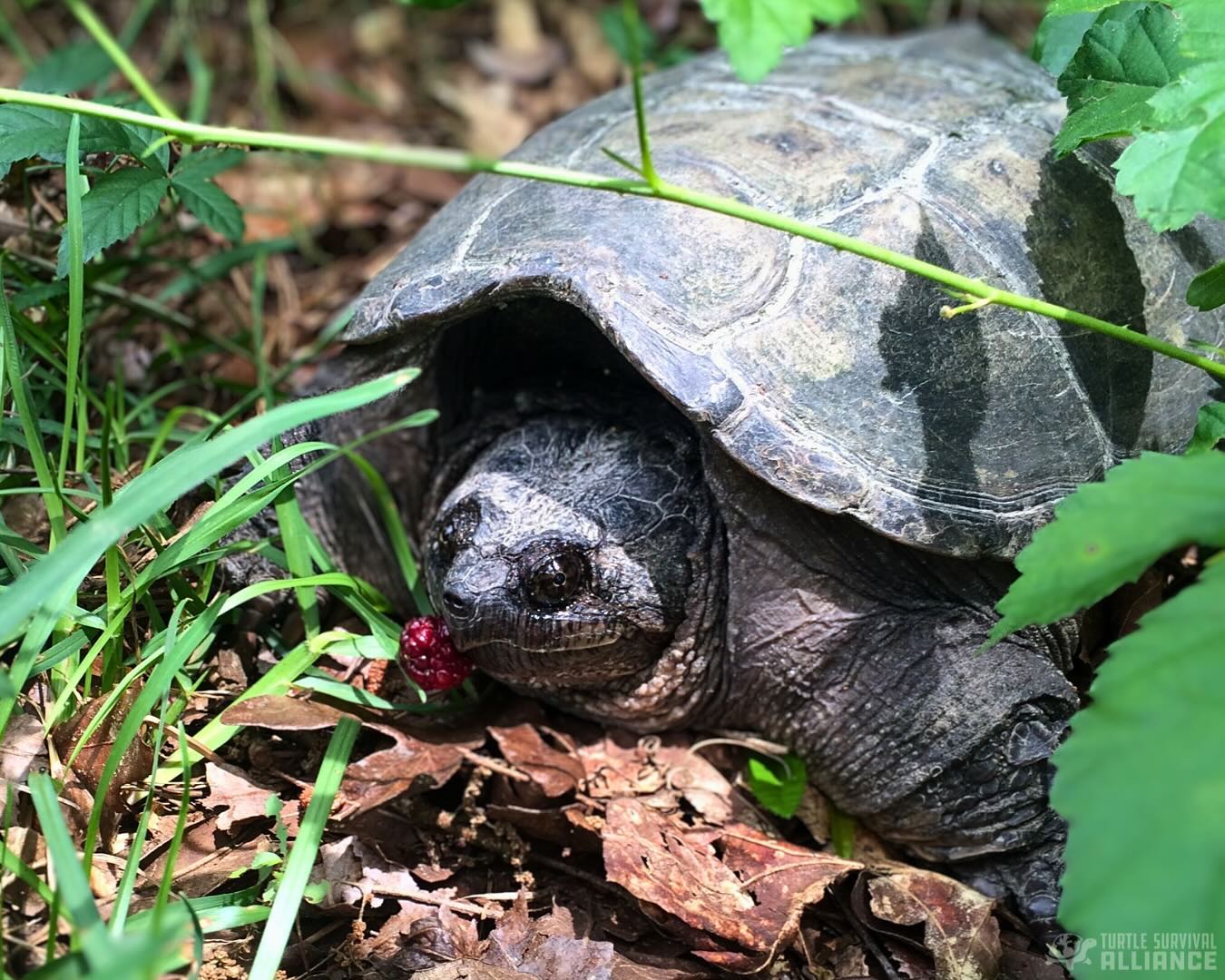- The biology and characteristics of Common Snapping Turtles
- The diet of Common Snapping Turtles and their feeding behaviors
- Common Snapping Turtles at the Turtle Survival Center
- Wildlife Conservation Efforts for Common Snapping Turtles
- How to observe and report sightings of Common Snapping Turtles
Common Snapping Turtles, scientifically known as Chelydra serpentina, are an intriguing species notable for their distinct physical traits and behaviors. Found predominantly in North America, these turtles are often discussed within zoology and wildlife conservation circles for their vital role in local ecosystems. One interesting aspect of their biology is their feeding habits, including a phenomenon sometimes humorously dubbed “Snapping Turtle Snack Time.”
The biology and characteristics of Common Snapping Turtles are unique. These turtles possess rugged, ridged carapaces, and powerful jaws capable of delivering a formidable snap. Their appearance is often reminiscent of their prehistoric ancestors, giving them an almost ancient look. Common Snapping Turtles have long necks and tails, with their necks allowing for a surprisingly wide range of motion outside the shell.
Snapping turtles are known for their aggressive disposition when out of the water, a defensive measure that has evolved due to their relatively slow movement on land. In water, however, they are quite agile and tend to swim away rather than confront potential threats. Males generally grow larger than females, with the average size ranging from 10 to 35 pounds, although some individuals can exceed this.
The diet of Common Snapping Turtles is omnivorous, consisting of both plant and animal matter. In the wild, their food sources include various aquatic invertebrates, fish, amphibians, carrion, and vegetation. Snapping turtles consume berries, which they find during their terrestrial forays. This “Snapping Turtle Snack Time” on berries can be observed at locations like the Turtle Survival Center.
Interestingly, their opportunistic feeding behavior aids in maintaining the ecological balance. Snapping turtles play a critical role in their habitats by consuming carrion and controlling fish and amphibian populations. Their presence can indicate a healthy ecosystem, highlighting the importance of their conservation.
An example of snapping turtles benefiting from controlled environments can be seen at the Turtle Survival Center. This facility, dedicated to conserving threatened turtle species, provides a sanctuary where snapping turtles can thrive. Snapping turtles found there, including wild ones, are often seen partaking in their berry snacks. This not only showcases their natural diet preferences but also highlights the importance of habitat preservation in fostering wildlife health.
Conservation efforts for Common Snapping Turtles are vital due to the various threats these animals face, including habitat destruction, pollution, and illegal harvesting. Several organizations, including the Turtle Survival Center, focus on protecting these turtles through habitat preservation, public education, and research initiatives. These efforts are crucial in facilitating the long-term survival of snapping turtles in the wild.
Individuals can contribute to conservation by observing and reporting sightings of Common Snapping Turtles. If you encounter a snapping turtle on your property, it’s valuable to note its behavior, estimated size, and location. Sharing this information with local wildlife conservation groups can provide data that assists conservation efforts.
Snapping turtles are fascinating creatures with significant ecological roles. Their feeding behaviors, especially their enjoyment of berries, add another layer to understanding their complex existence. By supporting conservation initiatives and reporting sightings, we can contribute to the preservation of these intriguing reptiles for future generations to admire and study.
*****
Source Description
Snapping Turtle Snack Time 🍓
Common Snapping Turtles can be found around the Turtle Survival Center’s property, including this wild one snacking on berries.
Have you ever seen a snapping turtle on your property? Tell us the details below!

